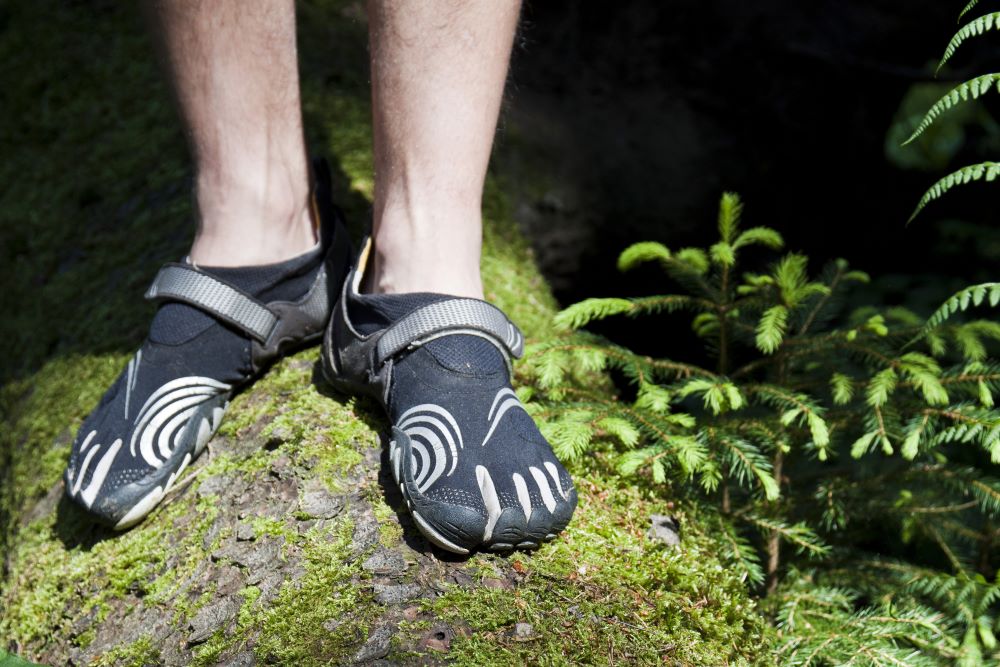Incorporating resistance band training into your running routine can yield numerous benefits that enhance overall performance and strength. Unlike traditional weights, resistance bands offer unique advantages that are particularly beneficial for runners.
Firstly, resistance bands provide a full range of motion, allowing runners to engage various muscle groups effectively. This flexibility helps in developing strength across different planes of movement, which is crucial for maintaining balance and stability while running. Additionally, the adjustable tension of bands means you can easily tailor the resistance to suit your fitness level, making it an excellent option for both beginners and seasoned athletes.
Another significant benefit is the improvement in core strength. A strong core is vital for runners as it enhances posture and reduces the risk of injuries. By integrating specific exercises with resistance bands, you can effectively target your core muscles in conjunction with your legs, leading to better running efficiency.
Moreover, resistance band training helps in injury prevention. Many running injuries stem from muscle imbalances and weaknesses. By focusing on strengthening these underutilized muscles, you can create a more balanced body, which can significantly reduce the risk of common running injuries.
To unlock all these benefits, consider adding resistance band exercises into your training routine. Visit our website to learn more and get started today! Click here.
Essential Resistance Band Exercises to Strengthen Running Muscles
To maximize the benefits of resistance band training, it’s essential to focus on exercises that specifically target the key muscle groups involved in running. Below are some of the most effective resistance band exercises designed to strengthen running muscles:
- Squats with Resistance Band: Place the band just above your knees and perform squats. This exercise primarily targets the quadriceps, hamstrings, and glutes, enhancing lower body strength.
- Standing Hip Abduction: Anchor the band to a sturdy object and loop it around your ankle. Stand tall and lift your leg outward against the band’s resistance. This move focuses on the hip abductors, improving lateral stability essential for running.
- Clamshells: Lie on your side with the band around your thighs. Keeping your feet together, lift your top knee while keeping your hips stable. This exercise targets the glutes and helps in strengthening the hip stabilizers.
- Resistance Band Deadlifts: Stand on the band with feet shoulder-width apart, holding the handles. Keeping your back straight, hinge at your hips and lower your torso, then return to standing. This targets the hamstrings and lower back, crucial for proper running form.
- Seated Rows: Sit on the ground with your legs extended and the band wrapped around your feet. Pull the band towards you while keeping your back straight. This strengthens the upper back and shoulders, which is vital for maintaining posture during runs.
Incorporating these exercises into your training routine will not only enhance your strength but also improve your overall running performance by targeting the specific muscles that are engaged during each stride.
Incorporating Resistance Bands into Your Running Routine

Integrating resistance bands into your running routine can significantly enhance your training effectiveness. To achieve the best results, consider the following strategies:
- Warm-Up Sessions: Start your workouts with resistance band exercises to activate the muscles you will be using while running. Incorporating dynamic stretches, such as banded leg swings and hip openers, prepares your body and reduces the risk of injury.
- Post-Run Strength Work: After your run, dedicate time to strength training using resistance bands. Focus on exercises that target the major running muscles like the glutes, hamstrings, and core. This approach aids in muscle recovery and builds strength.
- Combine Cardio and Strength: On days when you are not running, consider a circuit workout that includes resistance band exercises alongside cardio intervals. For example, alternate between short runs or high knees and resistance band squats or rows for a balanced workout.
- Progressive Overload: As you become more comfortable with resistance band exercises, gradually increase the resistance or the number of repetitions. This principle of progressive overload will challenge your muscles further, promoting growth and strength.
- Use Resistance Bands for Form Correction: Resistance bands can also assist in correcting your running form. Attach a band to a stable object and practice running with resistance, focusing on maintaining proper posture and stride.
By thoughtfully incorporating resistance bands into your routine, you not only build strength but also enhance your running efficiency, leading to improved performance on the trails.
Proper Techniques for Effective Resistance Band Workouts

To maximize the benefits of resistance band workouts, it’s crucial to use proper techniques. Adopting the right form not only enhances effectiveness but also minimizes the risk of injury. Here are some essential techniques to keep in mind:
- Choose the Right Band: Selecting a resistance band that offers the appropriate level of challenge is vital. Bands come in various resistance levels, so start with a band that allows you to perform exercises with good form while still feeling challenged.
- Maintain Proper Posture: Good posture is essential for any workout. Keep your back straight, shoulders relaxed, and core engaged during resistance band exercises. This alignment helps to activate the correct muscle groups and provides stability.
- Control Your Movements: Focus on performing each exercise slowly and with control. Avoid letting the band snap back too quickly; instead, engage your muscles throughout the entire movement. This controlled approach not only builds strength but also enhances muscle endurance.
- Engage Your Core: To maximize stability and strength during resistance band workouts, always engage your core. A strong core supports your movements and can improve your overall effectiveness, especially during dynamic exercises.
- Focus on Breathing: Proper breathing is often overlooked but is incredibly important. Inhale during the easier part of the exercise and exhale during the more challenging phase, helping to maintain rhythm and energy.
- Vary Your Routine: To keep your workouts fresh and prevent plateaus, include a variety of exercises targeting different muscle groups. This not only helps in strengthening various areas but also keeps you motivated.
By implementing these proper techniques, you can ensure that your resistance band workouts are both effective and enjoyable, paving the way for improved strength and running performance.
Common Mistakes to Avoid When Using Resistance Bands

While resistance bands are versatile and effective tools for enhancing strength and performance, there are common mistakes that can hinder your progress or even lead to injury. Being aware of these pitfalls can help you maximize your workouts. Here are some mistakes to avoid:
- Using the Wrong Band: Not all bands are created equal. Using a band that is too heavy can compromise your form and increase the risk of injury, while a band that is too light may not provide enough resistance to be effective.
- Neglecting Warm-Up: Skipping a proper warm-up can lead to muscle strain. Always take the time to warm up before starting your resistance band exercises to prepare your muscles and joints.
- Overextending the Band: Pulling a resistance band too far can cause it to snap back, potentially leading to injury. Always work within a comfortable range of motion to maintain control and safety.
- Ignoring Muscle Engagement: Focusing solely on the band without engaging the relevant muscle groups can reduce the effectiveness of your workout. Ensure that you are activating the muscles intended for each specific exercise.
- Inconsistent Tension: Allowing the band to lose tension during exercises can diminish the workout’s effectiveness. Maintain steady tension throughout the movement to fully engage your muscles.
- Not Adjusting Resistance: As you progress, it’s important to adjust the resistance band to continue challenging your body. Sticking with the same level of resistance for too long can lead to plateaus in strength development.
Avoiding these common mistakes will help you get the most out of your resistance band workouts, ensuring you build strength safely and effectively, while enhancing your overall running performance.
Tips for Choosing the Right Resistance Band for Running Exercises

Choosing the right resistance band can significantly impact your running exercises. With various options available, it’s essential to consider a few key factors to ensure you select the most suitable band for your needs. Here are some tips to guide your decision:
- Determine Your Fitness Level: If you are a beginner, start with lighter bands that offer less resistance. As you progress, you can gradually increase the resistance to challenge your muscles further.
- Consider Band Length: The length of the band is crucial for the type of exercises you plan to perform. Longer bands are often more versatile, allowing for a wider range of movements, while shorter bands may be more suited for specific exercises.
- Material Matters: Resistance bands come in a variety of materials, such as latex, rubber, or fabric. Latex bands are generally more durable and provide better resistance, while fabric bands can be more comfortable and less likely to snap.
- Choose the Right Resistance Level: Most bands are color-coded based on their resistance levels. Make sure to select a band that offers enough resistance to challenge you without compromising your form.
- Look for Handles and Attachments: Some bands come with handles or attachments that can enhance your workout experience. These features can provide better grip and versatility for various exercises.
- Read Reviews: Researching and reading reviews can provide insights into the quality and durability of different brands. This can help you make an informed decision and invest in a band that meets your needs.
By considering these factors, you can find the perfect resistance band to enhance your running exercises and help you achieve your fitness goals. Visit our website to learn more and get started today! Click here.


